

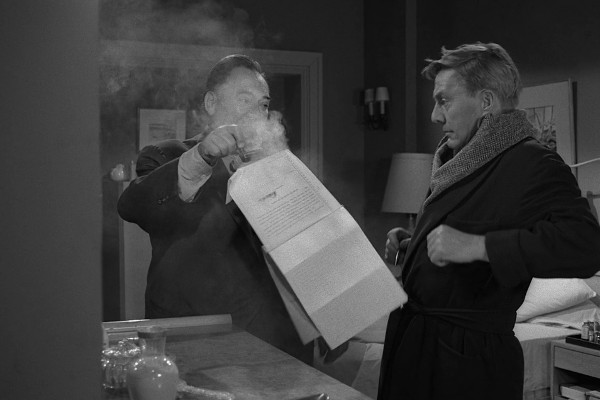
The series' first meeting with the Devil, of which there would be three return appearances (in different forms) to say nothing of the various agents of Death and Hell, and another three appearances in the 1980s revival series.
Escape Clause emerges as a story of two halves... the first is firmly in the "old fashioned" camp of stories, with jaunty incidental music cementing the fact that it's supposed to be one of the more humorous episodes, and broad playing. Yet when Walter Bedeker (David Wayne) sells his soul in return for near-immortality, it takes a commendably dark and twisted turn. First we get the suicide attempts of the lead character, jumping under a subway train in the knowledge that he'll survive. Then we get the accidental death of his wife, falling to her death, before Walter decides he wants to try out the electric chair. Things are made even darker when the same jaunty incidental music accompanies a fatal heart attack.
Adding to the perversity of a blackly comic episode is that the post-credits contained an advert by the Advertising Council Public Service, advising viewers to worship together in church. The television of the 1960s was a different climate, and the fact that Serling could get such material past the censors is a real wonder to behold.
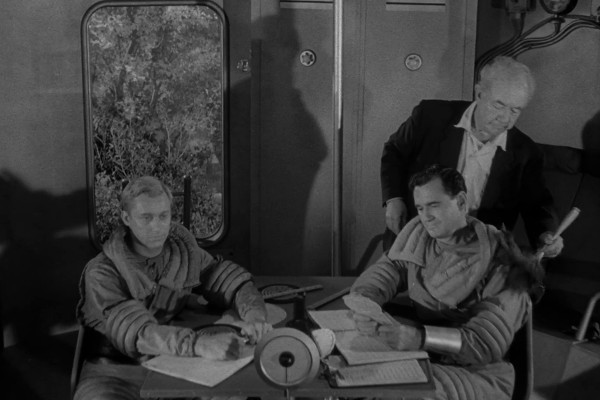
When The Twilight Zone does "space", it invariably dates it... UFOs look like saucers from the 1950s, and the dialogue becomes more stilted and more exposition heavy. That's very true here, with an episode that starts off slowly but gradually improves as it goes along, with three astronauts landing on an Earth where time has stood still. As a "twist" episode it does mean there's a fair wait before the inevitable dramatic rug pull, but it's worth sticking with to get there. Those who wish to play fannish games, imagining that all of the Zone is one big story, might get amusement from the fact that a nuclear war is said to have decimated the entire Earth in "1985"... the setting of the 1980s Twilight Zone episode A Little Peace and Quiet.
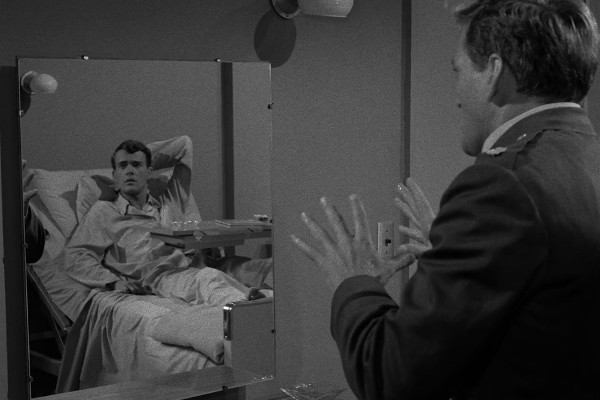
Rod Taylor stars as the leader of a trio of astronauts who returned to Earth after a rocket crash... only to find that their existence and memories of their life is fading, one by one. One of the sloppiest moments in a generally well-produced series occurs when Taylor, as pictured, looks into a mirror to find he has "no reflection"......... apart from the fact that his arm clearly comes into shot.
Written by Serling and based on the Richard Matheson short story "Disappearing Act", this could be classified as "bog standard" Twilight Zone, albeit with the knowledge that a "bog standard" Twilight Zone hadn't then been invented, and that even an average episode of the series is leagues ahead of most other television.
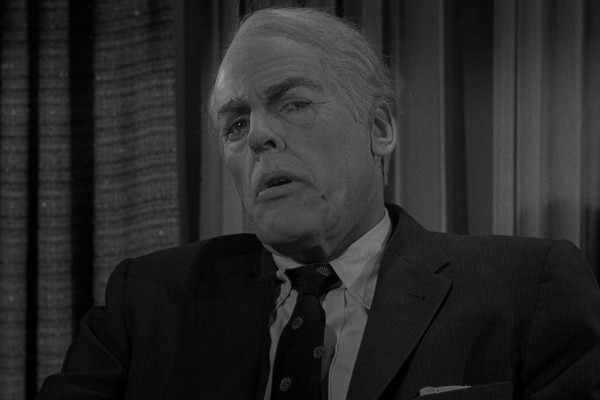
A very middling episode which deals with the subject of immortality, though doesn't adequately resolve it. There's a very rudimentary feel to this Charles Beaumont script, not helped by secondary actor Edgar Stehli giving a performance below his usual standard, where it occasionally feels like a recitation rather than a performance. Experienced actor Stehli can be forgiven, as he was in his seventies when the story was filmed... somewhat ironic, given the subject matter.
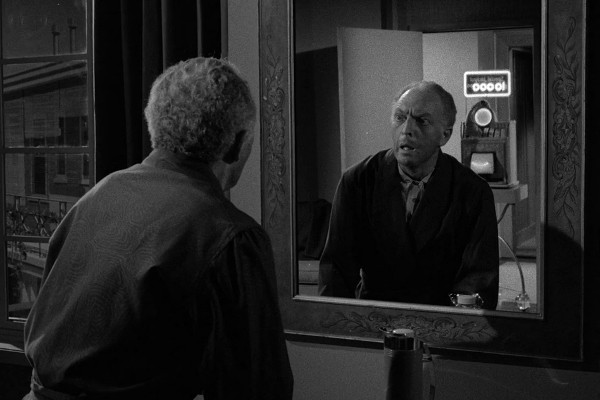
A tale of a man driven out of his mind by Vegas gambling addiction, what could be silly in lesser hands is magnetic thanks to thoughtful direction by Robert Florey and a compelling central performance by Everett Sloane.
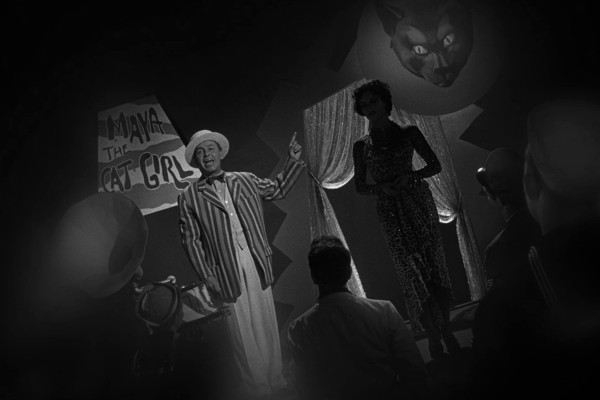
The first aired episode by a writer other than Rod Serling, in this case Charles Beaumont. Beaumont's time on the series would be striking yet tragic: while he would write classic tales such as Miniature and Shadow Play, he suffered from deteriorating health, which meant that four of his 22 Twilight Zone scripts were ghostwritten for him by other writers. He sadly died in 1967, aged just 38.
Based on Beaumont's own short story published in a 1958 issue of Playboy, Perchance To Dream tells the tale of a man with a heart condition, suffering a recurring dream where a mysterious lady tries to kill him. Fearing going to sleep, he seeks the help of a psychiatrist to rid him of the dream...